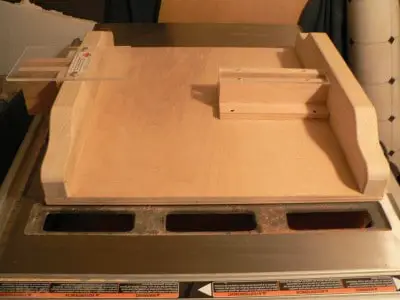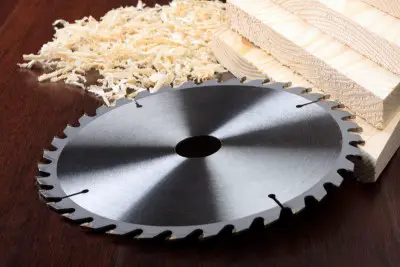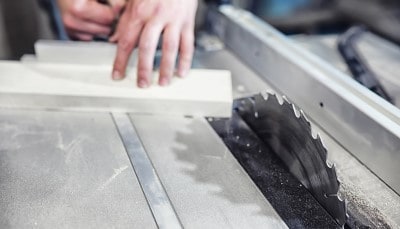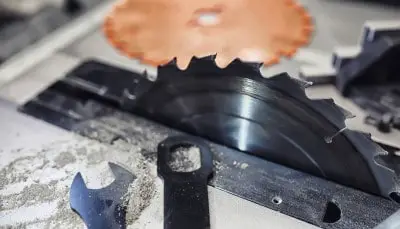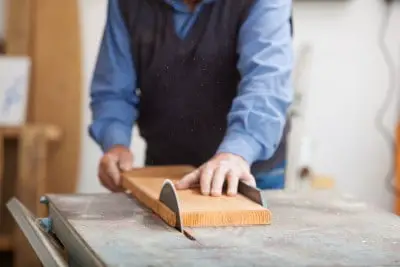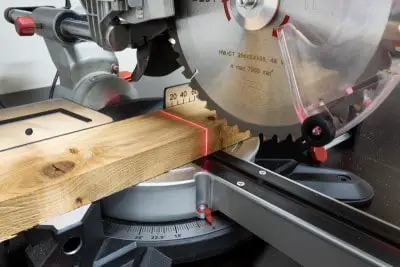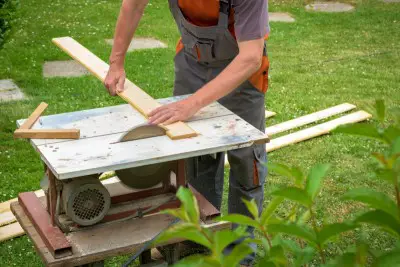I remember watching an old time friend making a stack of drawers for a bedside table. He made what they call ‘finger joints’ using a dado blade. We don’t have the same table saw but I wondered if a dado blade would fit on mine for the same technique and results.
So Can All Table Saws Use Dado Blades? Most table saw can use dado blades, but some table saws cannot. Standard dado blades have a maximum cut of 13/16 inches. They come in three main sizes, 6,7 and 8 inches which will fit most standard 10-inch saws.
Even though some table saws are compatible with most dado blades, there’s a few things you should consider. They do have their limitations but there are also some other helpful things you can do to make your experience much better and safer.
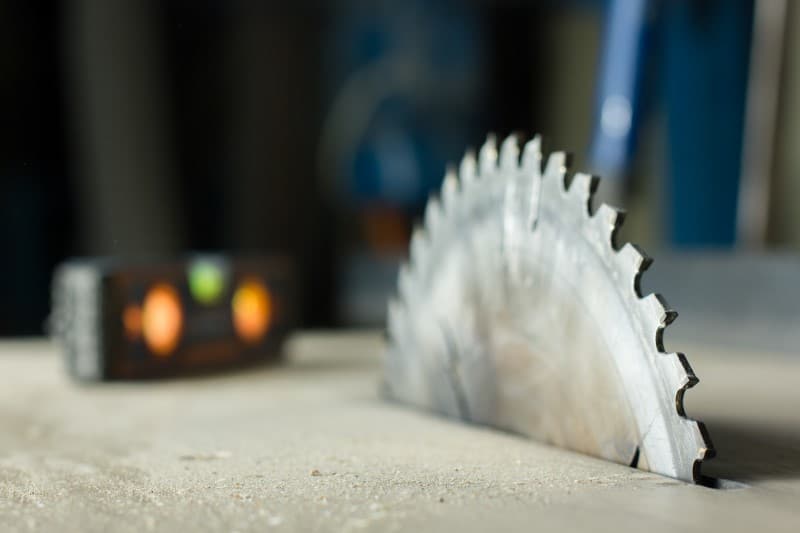
How To Know When A Saw Can Use Dado Blades?
When working with a standard sized table saw, you have a limited amount of room on the arbor. Full stacked dado blades usually come with two blades for cutting, shims to accurately measure the width you want your grooves to be without errors or removing your riving knife, and two chippers to remove excess wood between the two blade cuts.
While your saw’s arbor will include two arbor washers, arbor flange and arbor nut. All of which are recommended to fit with any table saw for the best hold and safety. In order for a stacked dado blade to be nicely secured, the arbor must thread completely through each of these pieces while also extending through the nut.
Most saws today will give you recommendations for using dado blades, be sure to pay special attention to them.
The length of an arbor usually correlates to the motor power. Stacked dado blades come with a set diameter for the arbor hole.
When purchasing your blade, be sure to check the diameter and length of your saws arbor to make the best choice. If they both match, then you should be in the clear. These sets usually perform better and are more adaptable to your machine and the joint type you want to create.
Another choice you can make is the wobble dado blade. A wobble dado blade uses only one blade with an offset rotation. The blades come with two plates that you rotate to adjust the amount of lean on the blade.
As the blade cuts, it wobbles or tilts back and forth in an ‘S’ formation to both cut and chip the wood for your desired groove. This type of blade takes less time to set up, will fit comfortably on an arbor without much hassle, as well as being the more inexpensive option.
However, if you’re going to use this blade, you must consider two things: because of the tilt, the blade will create a curved bottom on your groove. The wider the tilt, the more pronounced the curve.
This will leave a noticeable gap if you have a cut that goes fully from one side to the other. Compared to a stacked dado blade that remains flat. Furthermore, due to the wobble, this blade carries much more vibration and is prone to splintering and tear-outs, especially when cutting plywood.
Besides these, other methods for using a dado blade with a table saw can become frustrating and dangerous.
What Can Go Wrong?
If you happen to choose the wrong dado blade for your saw, a few things can occur.
If the arbor hole is too small and you try to drill it to make it bigger, the blade will be imbalanced. While tempting, drilling may cause the blade to lose some hardness and elasticity, or temper. If the arbor hole on your blade is too large, this will also cause an imbalance. Imbalances cause vibration which increase operator fatigue and tool marks on the wood you’re cutting.
Additionally, arbors that are too short can cause the motor of your saw to jam from the heavy load. Cutting dados requires a lot of power to do more work. If the motor cannot handle such work, the chance of a kickback when cutting is very high.
Not only this but if the arbor does not fully thread through the blade, you risk a loose nut while operating your saw, which is also very dangerous. Quick rule-of-thumb, if you can’t actually see the arbor past the nut, you may have too many chippers my friend.
It may be tempting to do whatever you want to do with your table saw because well…it’s yours. However, I would recommend keeping these possible issues in your head. It’s one thing for you to watch another person working on a dream project with a similar saw, taking shortcuts with no problem.
It’s another to actually try these methods yourself on this similar saw, either causing an injury or breaking something. Both of which dig into your pockets and cause your work to get terrible reviews.
Losing money and having unusable equipment and wasted materials is not exactly a risk I’d recommend. However, do what you want, that’s just my opinion.
Suggestions For Cutting Dados
Some of these issues can be frustrating; trust me, I know. That’s one thing about buying and making new tools for your shop. All you want to do is cut a dado or rabbet joint, it’s simple but not. However, there are some solutions for this particular problem.
Using Blade Stabilizers
Your saw comes with its own set of arbor washers, one of which can sometimes be omitted. Many woodworkers recommend not using any washers at all. Even in some manuals, certain dado cuts won’t require them. However, if you want to play it safe, use blade stabilizers.
Arbor washers can be a bit wide, which can widen your blade significantly past an arbor. Blade stabilizers are much thinner and will stiffen your blade to cut with consistency. They’re used for precision and will distribute the proper force needed for your dado blade to perform at its best. They also minimize runout and decrease vibration.
Making Multiple Cuts
Another option is making multiple cuts to get the desired width of your groove. You can set your dado blade to a 1/2-inch-wide or 3/8-inch-wide cut and make two passes to achieve a 3/4-inch-wide dado. This will keep your blade safe for operation by allowing an easy fit on the arbor.
With this type of fit, there will be less stress on the arbor and since the blade will have less area to cover, your saw’s motor will not become overstressed. In addition to this, you will reduce the amount of heat on the teeth of the blades and chippers, which is also a plus.
When To Use Dado Blades?
Dado joints are one of the best options for making strong furniture connections. Even if you’re an amateur, simply finding the best dado blade option for your table saw can help you achieve those seamless results you desire. Among the joint options you can do is:
Dado Joint: A simple narrow groove for added strength and glue surface area.
Rabbet Joint: Partial groove to make the backs, tops and bottoms of a furniture piece join smoothly together.
Tenon Joint: Connect two pieces of wood by inserting one piece into the other.
Tongue and Groove Joint: Conjoin two flat pieces of wood to make a flat surface.
Half Lap Joint: Join two pieces of wood by creating thin grooves to overlap.
Finger Joint: Make comb-like grooves in two pieces of wood for puzzle-esque connections.
Read more:

